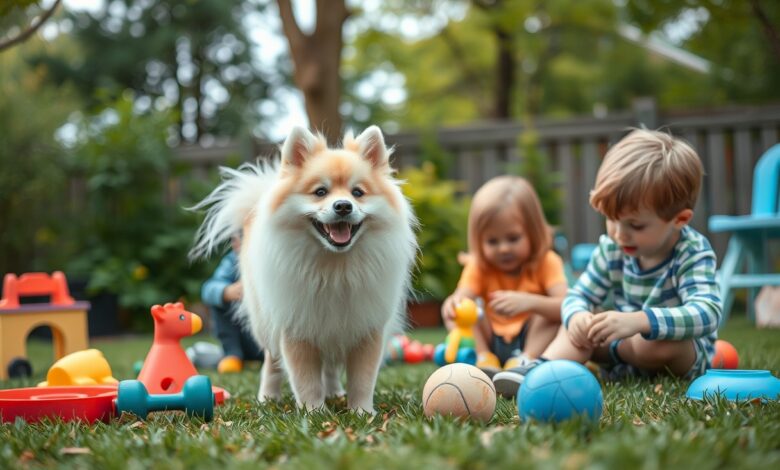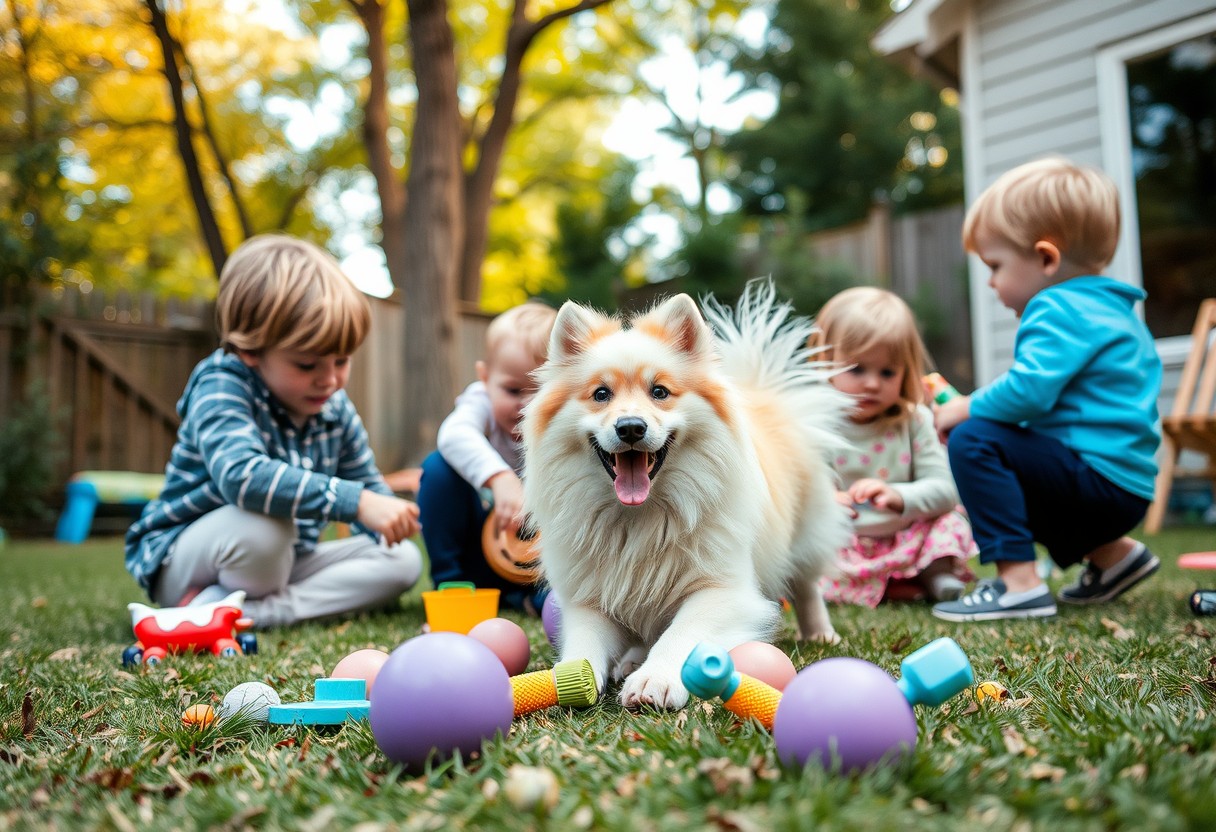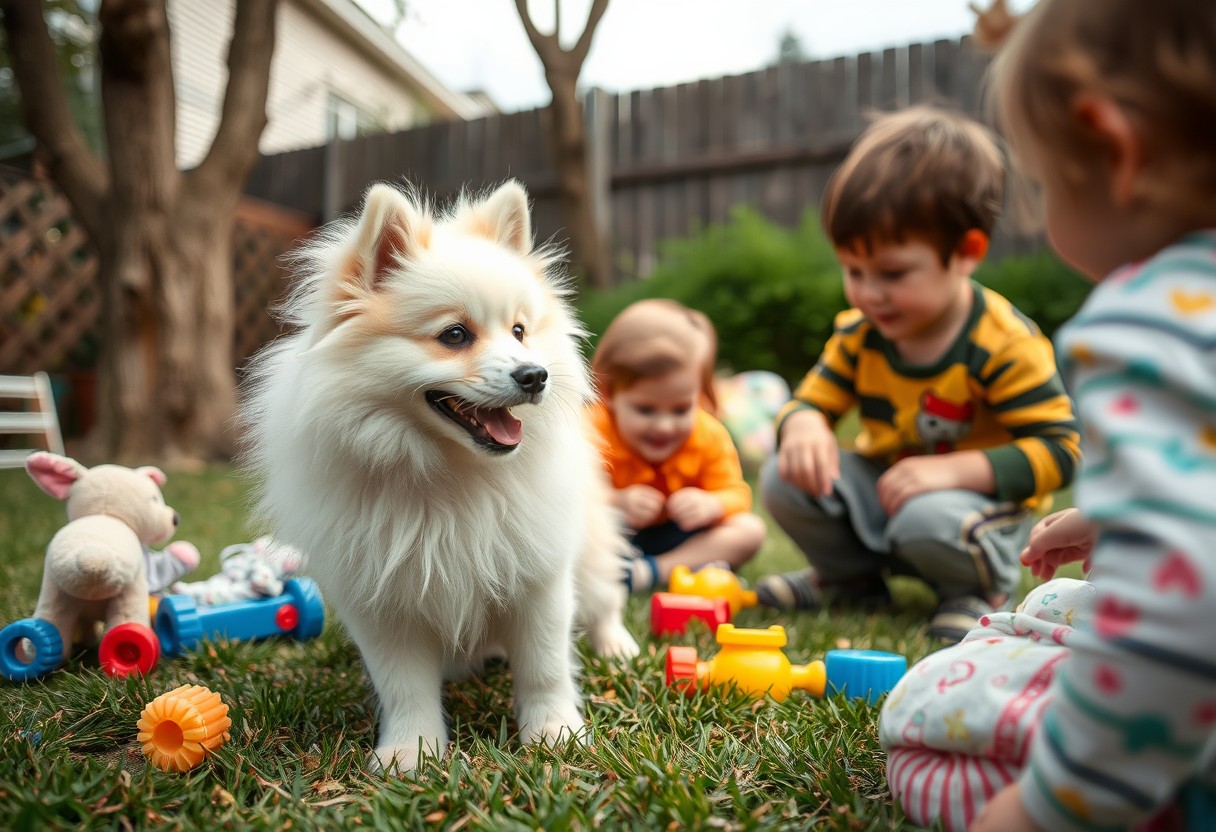Are Finnish Spitz Good Family Dogs? Understanding Their Family Dynamics

Family harmony can be significantly influenced by the type of dog you introduce into your home, and the Finnish Spitz presents a noteworthy option. Known for their playful demeanor and strong loyalty, these dogs can be excellent companions for children and adults alike. However, it’s important to understand their energetic nature and tendency to bark, which can become overwhelming if not managed properly. By grasping these dynamics, you can determine if a Finnish Spitz might be the right fit for your family’s unique lifestyle.
Key Takeaways:
- Friendly Temperament: Finnish Spitz are known for their affectionate nature, making them a great addition to family life.
- Active Lifestyle: They require regular exercise and mental stimulation, so families who enjoy outdoor activities will find them a perfect match.
- Strong Bonding: Finnish Spitz tend to form strong attachments with their families, thriving on companionship and social interaction.

Characteristics of Finnish Spitz
Your understanding of the Finnish Spitz is important when considering them for your family. These dogs are characterized by their lively, playful demeanor and striking appearance. They are known for their friendly nature and independent spirit, making them wonderful companions, especially for families with children. However, their independent streak may also present challenges as they can be somewhat stubborn at times, necessitating patience and consistent training to foster a harmonious family dynamic.
Temperament
Your Finnish Spitz’s temperament is a blend of playfulness and friendliness. They are often affectionate and love to interact with family members, making them suitable playmates for children. However, their independent nature can sometimes lead to a less cooperative attitude towards other pets, indicating that early socialization is important. Being aware of these traits helps in assessing their compatibility with your family’s lifestyle.
Physical Attributes
One key aspect of Finnish Spitz is their physical attributes; they typically weigh between 20-35 pounds and stand about 15.5 to 20 inches tall. With a thick, double coat that requires regular grooming, they are well-suited for outdoor activities, making them active companions. However, their size and exercise needs must fit your family’s lifestyle and available space (consider your home environment when making decisions about adding a Finnish Spitz).
Also, their athletic build and boundless energy mean they require regular exercise to stay healthy and happy. Their coat can be challenging during shedding seasons, so be prepared for regular grooming sessions to keep things tidy. Understanding these physical characteristics will help you ensure you’re meeting their needs properly, impacting how they adjust and thrive within your family (plan for their energy levels and grooming needs during your decision-making).

Family Dynamics with Finnish Spitz
Assuming you are considering a Finnish Spitz as part of your family, understanding their family dynamics is crucial. These dogs are known for their loyal nature and strong family bonds, making them excellent companions. They thrive on interaction and will quickly become involved in family activities, demonstrating a mix of playfulness and affection. Their alertness and guarding instincts also enhance their role within the family, as they tend to be protective of their loved ones.
Interaction with Children
Below, Finnish Spitz typically have a playful and patient nature when interacting with children. They enjoy engaging in games and activities, making them fun companions for young ones. However, it’s important to consider age-appropriate interactions; younger children should be taught how to approach and play with the dog to ensure both parties feel safe. You can expect the Finnish Spitz to be both playful and gentle, although supervision is key to minimize any potential mishaps.
Socialization with Other Pets
By nature, Finnish Spitz may exhibit strong prey instincts, which is why early and consistent socialization with other pets is crucial. They can coexist well with both dogs and cats when appropriately introduced. Begin socialization at a young age and ensure positive interactions by using rewards and praise; this helps foster a sense of goodwill among your pets. It’s crucial to monitor playtime and contact to ensure everyone feels comfortable and secure.
Consequently, establishing a harmonious environment with a Finnish Spitz and other pets involves understanding their social dynamics. They may show strong guarding instincts toward family members but can also display curiosity and assertiveness with other animals. Adequate supervision is vital during initial introductions to protect your pets’ safety and ensure positive interactions. Utilizing positive reinforcement techniques will help you build strong relationships, ensuring both your Finnish Spitz and other pets feel comfortable and happy in their shared environment.
Training Considerations
Despite their charming personalities, Finnish Spitz require thoughtful training to thrive in a family setting. Their independent nature can pose challenges, making it necessary for you to adopt consistent, positive reinforcement methods that align with their learning style. Engaging your dog with interactive activities, rewarding good behavior, and maintaining a structured approach will help cultivate a strong bond and encourage good manners within your home.
Basic Obedience Training
Before introducing Finnish Spitz to their new home, it’s important to initiate early obedience training. This breed responds best to positive reinforcement techniques, such as clicker training or using treats and praise. By teaching necessary commands like sit, stay, and come, you lay the foundation for acceptable behavior, ensuring your dog understands expectations within family dynamics. Early training not only enhances their skills but also fosters a respectful relationship, which is vital for their integration into your family environment.
Behavioral Challenges
The Finnish Spitz may exhibit behavioral challenges such as stubbornness and excessive barking. To address stubbornness, use consistency and patience during training sessions, reinforcing commands with positive rewards. For managing barking, identify triggers and employ training techniques that redirect their attention, such as command reinforcement or distraction with toys. Incorporating these strategies will help create a harmonious atmosphere within your family.
Hence, addressing these behavioral challenges proactively is necessary for fostering a well-adjusted Finnish Spitz. Stubbornness can lead to frustration if unmanaged, so using positive reinforcement to guide their behavior is key. Addressing excessive barking requires you to recognize the triggers, whether it be strangers or sudden noises. By employing techniques such as desensitization or redirection, you can significantly minimize unwanted barking. A combination of strong leadership and patience will ultimately pave the way for a well-behaved companion who thrives in your family’s lively environment.

Exercise and Activity Needs
To ensure that a Finnish Spitz thrives in a family setting, it’s vital to meet their exercise and activity needs. These dogs are energetic and require regular physical activity to remain healthy and happy. Incorporating activities like daily walks, hiking, or playing fetch in a secure area not only caters to their energy levels but also enhances the bond with your family. (Investing time in their exercise is vital for maintaining a harmonious household.)
Daily Exercise Requirements
One aspect of the Finnish Spitz’s lifestyle is their daily exercise requirements, which should total at least 60 minutes of vigorous activity. This breed enjoys outdoor adventures, so family hikes or trips to the dog park are excellent ways to engage them physically. You might consider incorporating running, agility exercises, or games that require chasing, which will allow your dog to expend energy in a productive manner. Ensuring your Finnish Spitz receives consistent exercise will prevent behavioral issues and promote a balanced demeanor.
Mental Stimulation
Exercise is not only physical; mental stimulation plays a significant role in keeping your Finnish Spitz happy and well-adjusted. Engaging your dog with interactive games, puzzle toys, or training sessions will enrich their mind and help avoid boredom. By involving your family in these activities, you’ll promote a deep connection between all members, enhancing everyone’s mental well-being. Regular mental challenges help your dog develop good habits while reducing stress and anxiety.
Needs for mental stimulation should also be prioritized in the daily life of your Finnish Spitz. Engaging them in activities that challenge their intelligence, such as scent work or basic obedience tasks, prevents undesirable behaviors stemming from boredom. Incorporating family training sessions or hide-and-seek games stimulates both your dog and children, creating a harmonious environment. Keeping their minds engaged will lead to a happier, healthier dog and a more fulfilling family dynamic.
Health Considerations
Many families interested in Finnish Spitz should be aware of various health considerations that can influence their suitability as family pets. Regular veterinary check-ups and preventative care are important to maintain your dog’s health and longevity. Common health issues that Finnish Spitz may face include hip dysplasia, progressive retinal atrophy, and skin conditions. Addressing these matters early can significantly improve their quality of life within your family unit, creating a more harmonious environment for everyone involved. (Adequate healthcare can lead to a more fulfilling experience for both you and your pet.)
Common Health Issues
On average, Finnish Spitz may encounter several health problems that can impact their overall well-being. It’s important to keep an eye out for signs of hip dysplasia, progressive retinal atrophy, and allergies. Prioritize regular veterinary check-ups and a balanced diet to reduce the risk of these issues. Additionally, your involvement in preventative care measures plays a significant role in their suitability for family life. A healthy dog not only enjoys a better lifestyle but also contributes positively to family dynamics.
Lifespan and Care
Below the surface, Finnish Spitz typically enjoy a lifespan of 12 to 14 years, but achieving this duration requires dedicated care and attention. You should provide consistent exercise, mental stimulation, and a balanced diet to keep these dogs healthy and happy. The commitment needed goes beyond basic care; it involves integrating your Finnish Spitz into family activities, ensuring they feel loved and engaged. A devoted family dynamic fosters a nurturing environment for your dog, enhancing their quality of life.
Consequently, to fully benefit from the companionship of a Finnish Spitz, invest time in understanding their needs. Ensure a mix of physical activity, social interaction, and regular vet visits to combat potential health issues. A healthy Finnish Spitz will not only be a cherished family member but also promote a positive atmosphere at home. Keeping your dog happy requires consistent effort, but the loving bond you’ll form makes it worthwhile.
Summing up
Ultimately, if you seek a loving and energetic companion for your family, the Finnish Spitz could be a great choice. Their affectionate nature and loyalty make them wonderful family dogs, provided you can dedicate time to training and socialization. By understanding their unique personality and family dynamics, you can ensure a harmonious relationship. To better prepare for bringing a Finnish Spitz into your home, check out Finnish Spitz Care: Tips for a Healthy, Happy Dog.
Q: Are Finnish Spitz good with children?
A: Yes, Finnish Spitz can be excellent companions for children. They are known for their playful and energetic nature, making them great playmates. However, it is important to supervise interactions between the dog and younger kids to ensure that both parties are respectful and safe. Early socialization and training can help the dog learn how to interact well with energetic children, making for a harmonious relationship.
Q: How do Finnish Spitz behave with other pets in the household?
A: Finnish Spitz can get along well with other pets if properly socialized from a young age. They have a strong prey drive due to their history as hunting dogs; therefore, it is vital to introduce them to other animals gradually. Positive reinforcement techniques can help facilitate a peaceful coexistence. In households with smaller pets, extra precautions should be taken to ensure that interactions are safe and supervised.
Q: What is the grooming requirement for Finnish Spitz?
A: Finnish Spitz have a double coat that requires regular grooming. They typically shed, particularly during seasonal changes, so brushing two to three times a week is recommended to keep their coat healthy and to minimize shedding in the home. Regular grooming not only helps maintain the dog’s coat but also provides an opportunity to bond with your pet and check for any skin issues or parasites.





